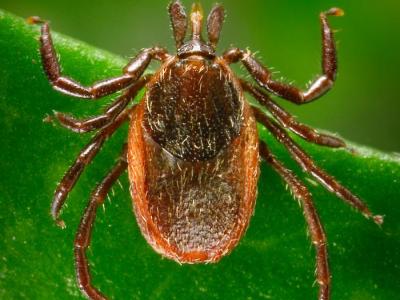Flu activity across the country remains at elevated levels but shows some signs of slowing, yet 15 influenza-related deaths in children were reported, bringing the season total to 56, the US Centers for Disease Control and Prevention (CDC) reported today in its weekly update.
In addition, the H3N2 strain—which typically causes more severe symptoms—has overtaken 2009 H1N1 as the predominant strain.
Europe is likewise seeing co-circulation of H1N1 and H3N2, according to a report yesterday from across the Atlantic.
US numbers still elevated
The proportion of people seeing a healthcare provider for influenza-like illness (ILI) was 5.0% last week, down a bit from 5.1% the week before but well above the national baseline of 2.2%. For comparison, last year the ILI rate peaked at 7.5%, but in 2016-17 it peaked at 5.1%.
"CDC expects flu activity to remain elevated for a number of weeks," the agency said in an accompanying FluView summary. "An annual flu vaccine is the best way to protect against influenza and its potentially serious complications."
Flu-related hospitalizations among patients of all ages rose from 23.8 per 100,000 people the week before to 32.1 per 100,000. The elderly continue to have the highest hospitalization rate, at 91.5 per 100,000, followed by preschoolers (45.5) and adults 50 to 64 years old (43.2).
The CDC said 49 states and Puerto Rico are reporting widespread influenza, up from 48 states the week before. And ILI activity is high in 33 states, up from 30 the week before.
Kids' deaths rise to 56
The CDC said in its summary, "Severity indicators remain substantially lower than what was observed last season. However, this week another 15 flu-related pediatric deaths were reported to CDC, bringing the total to 56 flu-related deaths in children reported to CDC for the 2018-2019 flu season."
Eight of the newly reported deaths in children were associated with the 2009 H1N1 and occurred in the past month. One was caused by H3N2 in early February, and six deaths were attributed to an influenza A virus that was not subtyped.
Last year the CDC reported 185 flu-related pediatric deaths for the entire season. The previous two seasons (2015-16 and 2016-17) saw 94 and 110 flu-related pediatric deaths, respectively.
H3N2 surge
For the first time this season, the CDC reported detecting more H3N2 strains than H1N1 strains among influenza A viruses.
For the week, 98% of respiratory isolates tested at public health labs were influenza A and 2% influenza B. Of the 1,128 influenza A viruses subtyped, 583 (54.1%) were H3N2 and 494 (45.9%) were 2009 H1N1.
The week before, 53.1% of influenza A viruses were H1N1, and 46.9% were H3N2.
H3N1, H1N1 co-circulating in Europe
European officials, meanwhile, report that the distribution of the two "A" strains has varied widely by country, according to an update in Eurosurveillance yesterday.
"The influenza season in 2018/19 in the World Health Organization European Region has been elevated for 9 weeks, with both influenza A viruses circulating, but the distribution of viruses differs greatly by country," the authors write. "Severity seems similar to past years that have had co-circulating influenza A viruses."
"At week 5 2019 [early February], activity remained elevated with positivity rates at 55%. Both A(H1N1)pdm09 and A(H3N2) viruses circulated widely and detection levels in primary care and hospital settings were similar to past seasons.
"Hospitalisation data may suggest an increased susceptibility to A(H1N1)pdm09 virus in older age groups."
See also:
Mar 1 CDC FluView report
Mar 1 CDC FluView summary
Feb 28 Eurosurveillance report





















